

Offensive Free Agent Review
Thank you to everyone who read, commented, retweeted, and thanked me for writing the Defensive Free Agent piece I published last week. It means a lot and helps keep me motivated to keep writing and recording the DolphinsTalk Weekly podcast. In light of the feedback I received about that piece, I felt compelled to write another one about the offensive acquisitions.
I know this sounds strange, but believe it or not, the Dolphins scored 404 points in the 2020 season – the fourth-highest total in team history! Check it out; that’s for real. Now, a couple of things:
– This point total, which comes out to an average of 25.3 points per game, was good for just 15th in the NFL last season. For some perspective, nearly half of the 32 teams in the league scored 400 points. Atlanta and Dallas were 16th and 17th and scored 396 and 395 points, respectively.
– Miami benefitted by scoring 3 total touchdowns on defense (2 fumble returns – Lawson, Van Ginkel) and special teams (1 punt return – Grant). Miami was also set up in advantageous spots by the defense and special teams with regularity.
When you factor in those points, it’s clear that for Miami to get where they want to go – the playoffs, AFC East Division Champions, and a Super Bowl – need more firepower on offense. If they can achieve that, it should unlock more from Tua Tagovailoa, and that, combined with Miami’s defense and special teams, should lead to more than 10-win seasons. Seasons we’ve been yearning for, for what seems like forever.
Now that we’re just 17 days away from the Draft, I wanted to take stock of Miami’s additions on offense and what they bring to the table. I’ll set this up relatively the same as my defensive article. I’ll provide the team stats from 2020. I’m going to skip a position guide, as things are more straightforward on offense. I’ll feature each addition and then list out what I think Miami needs to address via the Draft. Let’s get to it!
[pickup_prop id=”5658″]
2020 Statistics
Points Scored 404 (15th)
Points per Game 25.3 (15th)
Total Offense (YPG) 339 (25th)
Passing Offense (YPG) 233.5 (20th)
Yards per Attempt 7.0 (23rd)
Completion Percentage 66.2% (13th)
Rushing Offense (YPG) 105.5 (22nd)
Yards per Carry 3.9 (29th)
3rd Down Offense 38.6% (27th)
Sacks Allowed 34 (15th)
Giveaways 20 (16th)
Interceptions 13 (19th)
Fumbles 7 (T-4th)
Free Agent Signings
While Miami’s defensive signings were indicative of wanting to shut down opponent’s running games and creating flexibility in terms of personnel groups and packages used, I’m not sure there’s as much to glean from Miami’s offensive signings other than they want an injection of speed on offense. They managed to fill some holes: Jacoby Brissett in for Ryan Fitzpatrick at backup quarterback, Malcolm Brown as the big bag they were missing in 2020 after the failed use of Jordan Howard, Matt Skura in for the departed Ted Karras. The speed comes mostly in the form of Will Fuller, perhaps the biggest prize of the offseason in total for the Dolphins; certainly the prize on offense. Robert Foster also adds the speed element.
Jacoby Brissett – Whether you like it or not, Tua Tagovailoa has a fairly extensive medical file from Alabama. He missed the road game against the Jets last year with a thumb injury as well. With Ryan Fitzpatrick looking elsewhere for a starting job, and kudos to Fitzy for landing in a really nice spot for him with Terry McLaurin, Miami needs insurance for Tua. Jacoby Brissett can be that guy for Miami. The only other quarterback on the roster was Reid Sinnett, a practice squad guy for most of 2020.
Brissett will bring experience with him to Miami, having started 32 over the past five years and playing in parts of 17 others – Indianapolis used him as a short-yardage specialist QB in 11 games a year ago. While he’s not as experienced as Ryan Fitzpatrick, Brissett has been in the league long enough and has been tutored by the likes of Bill Belichick, Josh McDaniels, and Frank Reich and can serve as a talisman to Tua Tagovailoa.
This is solely based on a comparison of Brissett’s career to Tua’s rookie year, but they’re not too dissimilar in terms of certain things. They both have a propensity for being safe/smart with the football. To this point, like Brissett, Tua hasn’t shown a propensity to push the ball downfield much as their average yards per attempt are 6.3 for Tua and 6.6 for Brissett. Their interception rates are both low – only 1.3% of Brissett’s passes and 1.7% of Tua’s passes have been picked off.
Essentially, Brissett is pretty similar to Tua stylistically and in terms of being safe with the football and throws that they can make, as we’ll see in the following clips. Quick aside – kudos to Lucas Oil Stadium’s All-22 angles. Brilliant!
Conversely, that soccer stadium the Chargers had to play in stunk for All-22 angles. On this rep, we see a play-action rep that has a similar action, albeit at a slower pace, than some of the RPOs Miami ran with Tua. Brissett had to double-clutch here but is still able to get the ball outside. Obviously, the whole thing would be sped up in an RPO, but you get the idea that Brissett can come off the run fake and get his eyes quickly to his passing lane.
Brissett pic.twitter.com/SGMZYLxQj2
— Kevin Dern (@KevinMD4) April 21, 2021
I’m sure there’s going to be a decent amount of carry-over for the Dolphins playbook from Gailey to Godsey/Studesville, and here is a formation Miami made good use of with Tua last year. Indy is in 13 personnel (1 RB, 3 TE). They fake a stretch zone to the right and have a TE Cross w/double overs. Brissett sees the TE going away from the run action come open. I want to know if this is a designed thing because it sure seems like if the TE continues to the far side, it’s an easy TD, but Brissett throws it up the hash. Not saying this is a great throw, but it’s good to see Brissett isn’t afraid to make this type of throw, as we saw Tua pass on these at times last year when they were open.
— Kevin Dern (@KevinMD4) April 21, 2021
I apologize for the background noise on this one. My daughter has figured out how to use the TV remote and likes to have fun with it. This is another area where Miami could see more success with Tua, and I think if they end up with someone like Kyle Pitts or DeVonta Smith, they could see a lot more throws like this in the fall. Brissett comes off the play-fake and hits the dig over the middle of the field for a first down. Better ball place probably leads to some RAC yards here, but the chains keep moving.
— Kevin Dern (@KevinMD4) April 21, 2021
The final rep shows Brissett’s running ability a little bit. The Colts had a nice short-yardage package with him and used a play where he’d come in motion from the slot to line up under center and QB sneak it for a first down – Miami had this same play but used Malcolm Perry to execute the sneak. Here, we see the Colts use an RPO concept to execute Brissett’s TD run. They ran a very similar play where Brissett throws the smoke route outside, but it got stopped for no gain. This time, he just rides the fake and goes in himself, and at 6’4” 235lbs, he’s got plenty of size for a QB.
— Kevin Dern (@KevinMD4) April 21, 2021
Okay, my take on Brissett is that he’s a legitimate option to come in and win you a game as a backup QB if needed. He’s started and won games in the past. He doesn’t have the biggest arm – neither does Tua. He doesn’t have Tua’s accuracy, but he’s not afraid to pull the trigger on certain throws. Tua will get there. Both Brissett and Tua can move a little bit when running the ball, and with Brissett’s size and prowess in short-yardage runs, perhaps that’s a package Miami lifts from the Colts playbook to help stave off wear-and-tear on Tua in those situations. Overall, Brissett can come in, take care of the ball, and help you win a game or two when needed, which for Miami this season, fits very well.
Malcolm Brown – As we sit just eight days away from the Draft, Malcolm Brown is the Dolphins “big” back on the roster. When I went through and watched him, it surprised me that he can essentially function as a third-down back as well, and the Rams used him in the passing game to the tune of him catching 23 passes for 162 yards, that’s seven a pop, last season. Undrafted out of Texas, Brown stuck with the Rams for six seasons before signing with Miami. Brown is a solid back who can pound it between the tackles and has a little wiggle in the open field. There’s no overpowering element like there is with a Derrick Henry or was with an Adrian Peterson or Jerome Bettis, but he can hold his own. He doesn’t have breakaway speed or electric moves, but he sets up his cuts and blockers well, as we’ll see, and maintains balance. The Rams also used him lined up in the slot as a receiver, which could be a bonus for Miami, given that Tua Tagovailoa performed well in empty sets.
For a bigger back, Brown cuts pretty well and sets up his blocks. Here he uses a jump cut to get lateral and avoid the Bears penetration, hits the gap generated by the LG pulling, then tries to set up the receiver’s block on Eddie Jackson after he cuts back. There’s a shiftiness to his game that you come to appreciate the more you watch him.
— Kevin Dern (@KevinMD4) April 21, 2021
Brown can also run with power. Later in the Bears game, the Rams are in a goal-to-go situation on the 1-yard line. They give it to Brown on an inside zone run, and he gets head-up with Roquan Smith. Brown just runs through him into the endzone. This brings an element to Miami that they didn’t have last year; Miami had to get creative in the short-red zone because they didn’t have a power back capable of consistently winning short runs.
MB TD pic.twitter.com/p09a7F1e1G
— Kevin Dern (@KevinMD4) April 21, 2021
You’ll never confuse Malcolm Brown for a straight-line burner, but he can flash speed. Against the Cowboys, we’ll see the Rams run a weakside stretch play. Brown can get outside, uses a stiff arm against the corner, and can accelerate outside for the TD. Again, this is something Miami could not do last year.
MB TD2 pic.twitter.com/dZuCWe6LeU
— Kevin Dern (@KevinMD4) April 21, 2021
I mentioned that the Rams often used him lined up in the slot on 3rd downs. This is a play they worked in several games for chunks. Brown will align just off where a TE would be, and he’s going to help chip a defender before turning around for a slip screen. A couple of things to note here. Brown gets himself turned upfield quickly. This is something he does consistently well. He can read his blockers and gets north in a hurry to pick up a first down. I realize this seems like a rather simple play, and it is, but it’s something that Miami had a hard time doing last year to get positive yards. We saw flashes of plays like this, for example, the screen pass touchdown Myles Gaskin had against the Raiders, but it’s not something they achieved with regularity.
— Kevin Dern (@KevinMD4) April 21, 2021
In the final clip, we go back to 2019 for the Rams regular-season game against New Orleans. Brown is the widest guy at the top of the screen in the Rams empty bunch set. Their concept here is going to be a slant, post, and a search route. Brown is running the search route – it looks like a slant, but when he reads the coverage post-snap, he’s going to gear down and find a hole in the Saints zone coverage. This play doesn’t net a first down for the Rams, but I think it shows Brown’s awareness when running routes, and his presence will give Miami the ability to line a RB out wide who can reliably get open and catch passes.
— Kevin Dern (@KevinMD4) April 21, 2021
With RB seemingly on the menu during the Draft, and personally, I think it should be, it’s hard to say what Brown’s role will be. I think he’d be a welcome addition as a third-down back and big back. I wonder if this shifts the needle a little more towards Travis Etienne than Najee Harris or Javonte Williams for Miami, given what Brown can do.
Robert Foster – I think Miami’s tried to do this offseason to bring in players that can compete at some positions where you want improved play, for instance, bringing in Justin Coleman to compete in the slot with Nik Needham. They’re also, in my opinion, looking to churn some of the bottom of the roster spots, and I think Robert Foster vs. Mack Hollins could be an intriguing camp and preseason battle. While he’s not quite as large as Hollins, Foster was a key cog on special teams for Buffalo two seasons ago and with Washington last year.
In the first clip with Buffalo, he’s the second from the top on this kickoff. In this role, he’s got outside contain (i.e., don’t let the returner get outside of you to the far sideline). He makes the tackle on this one.
— Kevin Dern (@KevinMD4) April 23, 2021
Washington used him as a gunner on their punt team, a position Mack Hollins occupied for the Dolphins last year. Foster’s speed – 4.41 at the 2018 Combine – is on display here as he’s able to beat his jammer and down the punt at the two-yard line.
— Kevin Dern (@KevinMD4) April 23, 2021
I already mentioned Foster’s speed, and I think that’s his best trait to utilize towards making a roster. In watching several of his games, his route tree mainly consists of drags, slants, and vertical routes. Not that there’s anything wrong with that, but you have to win consistently with those routes to thrive in the league – and it makes finding clips a little more challenging on my end! Here are two clips from his time with the Bills that showcase his speed.
Here the Bills use Foster on an end-around, and he’s able to turn the corner and get north at the sideline for a large gain.
— Kevin Dern (@KevinMD4) April 23, 2021
Foster got the Broncos again on a drag route in this clip. What stands out to me here is that he’s able to turn on the afterburners very quickly after the catch and gets upfield for another large gain.
— Kevin Dern (@KevinMD4) April 23, 2021
Depending on who and how many receivers the Dolphins select next week, I think Foster’s chances of making the final roster a little slim. Showcasing his speed and special team’s ability will be key for him.
Will Fuller – Let’s be real; this is the crown jewel of Miami’s free agency (remember, they traded for Benardrick McKinney). Fuller is very impressive, and I think he comes in day one…which is Week 2 for him…and starts opposite DeVante Parker. In watching him in Houston, they used him in multiple spots. He can play on the left side, right side, and in the slot. You can line him up on or off the line, and he can beat press coverage, as we’ll see in two of the clips. We’ll see him win from the slot. We’ll see him win with a dig, and out, deep. He does it all. There are reasons why he averaged 16.6 yards per catch last year to go with his 8 TDs.
Fuller’s lined up at the bottom of the screen and is covered by Steven Nelson on this rep. Watson’s going to hit him on a fade for a TD. Fuller gives him a stutter at the line and can win the hand fight to get even with Nelson, and then we see Fuller’s ability to go up and highpoint the ball for six.
Will Fuller pic.twitter.com/S8HxINwCF6
— Kevin Dern (@KevinMD4) April 23, 2021
Slot fade by Will Fuller here. Such an easy route for him. He sees the DBs outside leverage, releases inside, and turns on the speed for a chunk play.
One skill we saw DeVante Parker flash a lot in 2019 was his ability to track, adjust, and highpoint the football on 50/50 balls that Fitzpatrick threw to him. Many of them resulted in chunk plays and/or touchdowns. We’ll see that from Will Fuller on this rep against Jacksonville. He’s at the bottom of the screen, releases outside, and tracks back for an underthrown ball. Then we get to see the acceleration and long speed for a 77-yard TD.
Will Fuller pic.twitter.com/vKsNUrkBnd
— Kevin Dern (@KevinMD4) April 23, 2021
Fuller wins this dig route with an outside stab step to get the corner to open his hips outside; Fuller then gets back inside and snaps off his stem across the field, generating about five yards of separation. Watson hits him in stride, and Fuller tallies some nice YAC. This is something that Miami sorely lacked in 2020, both with Tua and Fitzpatrick at QB. Fuller’s addition is a nice step in the right direction in being able to Tua.
Will Fuller pic.twitter.com/RJNJCcgUgS
— Kevin Dern (@KevinMD4) April 23, 2021
Later on against Detroit, we see Fuller lined up in the slot with the slot corner playing pressman. Fuller has a corner route as part of a smash concept, so he knows he will have to break his route to the outside. He’s able to fight through the jam at the line with an inside release. He’s able to use his arm to chicken wing the defender, stack him, and then uses his speed to complete the stem and break to the corner for a big gain. Miami had some success with a similar concept last year, often using Jakeem Grant running the corner route (watch the Kansas City game until Grant leaves). Fuller gives Miami a bigger target on that route, and that’s something else that can help Tua with taking more shots downfield.
Will Fuller pic.twitter.com/DNvkEYaL4Y
— Kevin Dern (@KevinMD4) April 23, 2021
In this rep against Atlanta, Fuller is at the bottom of the screen in the back of the stack. Atlanta is going to have a banjo call here where the defenders take whichever receiver breaks in or out, depending on their alignment (i.e., inside DB takes inside breaking WR; outside DB takes outside breaking WR). Fuller sets up his route nicely by flashing inside with a slow step, then snaps outside for an easy pitch and catch and more YAC yards. Such a simple play design – the stack has the inside receiver run a dig, and Fuller, outside, runs a quick out. But the way Fuller sets up his route is what makes this work so well.
Will Fuller pic.twitter.com/0OmS7QGCgf
— Kevin Dern (@KevinMD4) April 23, 2021
I’ll write it again; Will Fuller is the crown jewel of Miami’s free agency class this year. To me, he’s someone who can play all three receiver positions. He can play on the left, right, or inside. I think he displays a very savvy method of setting up his routes time and again based on the leverage of the DB covering him. He clearly has game-changing speed. He can win on vertical routes. He can win on horizontal routes and get yards after the catch. I think he could be interchangeable with, say, DeVonta Smith should Miami draft him, as someone who can play both the Z and F (slot) roles with DeVante Parker being asked to play the X more often than not, though Parker can also play in the slot. It wouldn’t surprise me if Fuller leads Miami in catches, yards, and touchdowns in 2021 – he’s very, very good!
Cethan Carter – In the same vein that Justin Coleman is competition for Nik Needham and the way Robert Foster is competition for Mack Collins, I believe that Cethan Carter represents competition for Durham Smythe. Miami extended Adam Shaheen last year. Mike Gesicki is a totally different type of player than Carter. Both of those guys aren’t going anywhere due to Carter’s presence. Frankly, I’d be surprised if Smythe went anywhere as well. But, I think Carter represents competition. Carter’s primarily been used as a special teamer – and most Dolfans forget that Smythe is the leader in special teams tackles for the Dolphins over the past two seasons – so there’s one angle. Carter also gets used as a blocker, pseudo-fullback and occasionally gets some targets in the passing game.
Carter moves pretty well and can get downfield well on punt coverage. Here we see him lined up as the left guard on the punt team. As you can see, he gets downfield very well and forces the Eagles’ returner out of bounds for a short return.
Carter pic.twitter.com/irQ2hwxV3Y
— Kevin Dern (@KevinMD4) April 23, 2021
Carter, who is smaller than Smythe, moves a little better. In this rep, we’ll see him line up inline as the Y-tight end. He will run an out route up the hash against the Ravens 3 under 3 deep zone. Carter runs a clean route and subtly shades his body away from the underneath defender for a first down as the throw was late coming out. This does seem like a weird concept by Cincinnati with Carter not breaking outside here. Either way, the chains move.
Carter pic.twitter.com/BbBkHgM3mf
— Kevin Dern (@KevinMD4) April 23, 2021
In our final rep of Carter’s, I have a goal-to-go rep of him blocking Colts DL Tyquan Lewis. Carter’s block isn’t what makes or breaks Joe Mixon’s touchdown run, but I wanted to find a rep of him taking on a bigger player; Tyquan Lewis has exactly 30lbs on Carter. Carter can get a good push and prevents Lewis from staying on his lateral track down the line.
Carter pic.twitter.com/rQl9jJnVBN
— Kevin Dern (@KevinMD4) April 23, 2021
Cethan Carter’s going to have to make this roster based on special team’s prowess. He’s got some flexibility to play as an inline TE a bit and as an H-Back/pseudo-fullback. That said, going into the Draft, I’d put Gesicki, Shaheen, and Smythe all ahead of Carter in the pecking order at tight end. He’ll be one to keep an eye on during the preseason.
Matt Skura & D.J. Fluker – Since Fluker and Skura were both on the Ravens in 2020, I decided to combine this into one section. At this point, I’d imagine Skura ends up the starting center for the Dolphins regardless of whether they draft a center. At least at the beginning of the year. He was well on his way to earning a large extension from the Ravens before he tore his ACL, MCL, and PCL at the end of November 2019. He had a notable case of the “yips” with some bad snaps in some poor-weather games for the Ravens last year. What’s encouraging is that despite coming off the injury, there are plenty of examples of Skura moving well in space on screens and moving laterally in zone-blocking plays. I’d imagine that movement continues to improve as he’s another year further removed from injury.
D.J. Fluker was signed this past week. It’s interesting that publicly, they’ve labeled Fluker as an “OL,” as opposed to a guard or tackle. I think his position with the Dolphins will be up in the air until we see how he progresses in camp and in the preseason. It’s possible that Miami drafts another tackle and shifts, Robert Hunt, inside. Possible, but I’m not entirely sure Miami wants to move Robert Hunt away from RT this soon. Many fans have preached, giving Tua more time to develop. The same holds true with Hunt. You have to give him more time at RT, in my opinion. That could mean that D.J. Fluker kicks into guard. It could mean he’s depth. It could mean they shift Solomon Kindley from right guard to left guard, and Fluker starts at right guard. There are lots of machinations to go through, and those will increase if (when) they draft a lineman (or linemen) in less than a week.
For now, let’s take a look at some of the reps of Fluker and Skura. Fluker played RG for the Seahawks in 2019 before playing RT for the Ravens last year. So, with that in mind, I wanted to find some reps of Fluker, and I’ve got two that impressed me with him going up against All-Pro Eagles DT Fletcher Cox.
In the first rep, which is on a 5-step drop with a play-fake, look at Fluker’s initial punch of Fletcher Cox. It jolts Cox back, Fluker gets his right hand underneath Cox’s outside arm and gains control of the rep. Cox gets two steps upfield, and then Fluker moves him laterally, ending his rush, and Russell Wilson fires a first down.
Fluker RG pic.twitter.com/BxRy39wOKz
— Kevin Dern (@KevinMD4) April 24, 2021
In the next rep, Seattle runs a stretch play with Fluker trying to cutoff Cox on the front side of the play. That’s a TOUGH assignment for any right guard in the league, and Fluker can get position and keep Cox from getting upfield. Fluker loses his footing on the rep, and Cox can help get in on the tackle. But the key to focus on here is Fluker’s lateral movement and power while on the move to keep Cox from getting penetration. If he can clean up the footwork, it’d be a damn impressive rep. Miami certainly has a “type” at guard, given their proclivity for size, which is one reason why Fluker is appealing at guard.
Fluker v Cox pic.twitter.com/YD8XD87ubW
— Kevin Dern (@KevinMD4) April 24, 2021
Indianapolis has a very nasty front seven and were the second-best run D in the NFL last year. I had to watch that game to see how Skura and Fluker fared, and this play really caught my eye. On 3rd down, Indy is going to show a late creeper that turns into a twist game trying to cross into the front side B gap with the lead player hitting the frontside A gap with Skura turned to the backside. Skura can recognize the blitz, despite the Colts showing it late and can reset and anchor to allow Lamar Jackson to get the ball out for a first down without facing inside pressure.
Skura – rec pic.twitter.com/WyWxbzkbIM
— Kevin Dern (@KevinMD4) April 24, 2021
I realize a checkdown against a 4-man rush isn’t really an exciting thing. But look at how easy pass-pro comes to both Fluker and Skura here when it’s facing straight-up pass-rush. This is routine work for them, which is a good thing.
Fluker/Skura pic.twitter.com/S9pIdD7bhI
— Kevin Dern (@KevinMD4) April 24, 2021
Okay, so there weren’t many great run-blocking reps against the Colts, and I suppose that’s expected. Chris Ballard drafts D-lineman very well. But on this screen pass, I wanted to highlight Matt Skura’s movement. First of all, he’s helping to double Grover Stewart, who is a STRONG dude. Skura can get out laterally to block for the screen. Now, he misses his target, who ends up tackling Gus Edwards. But comparing Skura’s movement to Ted Karras’s movement is what I want to focus on here. It’s much more natural, even after coming off triple-ligament surgery. Miami could very well utilize this skill to greatly affect the running backs they have – even as the group currently stands.
Skura screen pic.twitter.com/pQNEcy8bU0
— Kevin Dern (@KevinMD4) April 24, 2021
With Tua at quarterback, we’re going to see RPO’s. Here are two reps with both Fluker and Skura making it look as easy as it should be without getting too far downfield and drawing flags.
RPO protection pic.twitter.com/dwTySrZpCo
— Kevin Dern (@KevinMD4) April 24, 2021
RPO pro pic.twitter.com/dXat6xH6Bs
— Kevin Dern (@KevinMD4) April 24, 2021
Should the Dolphins want to keep D.J. Fluker at RT, his natural position dating back to his days at Alabama, you want to see how effective he looks there. Against New England, he gets a 1-on-1 rep against Chase Winovich. Winovich will try and cross Fluker’s face and rush inside to get B Gap pressure on Lamar Jackson. Winovich initially gets the inside track on Fluker. Fortunately, Fluker has 36.75” arms – those are vines! He’s able to get his hands on Winovich without giving up penetration and takes him inside, allowing Lamar Jackson to step easily into his throw.
Fluker pic.twitter.com/5ezDLMDPG6
— Kevin Dern (@KevinMD4) April 24, 2021
If you want to see Fluker run-block from the RT spot, I present to you this rep against the tremendously underrated Lawrence Guy, who nearly signed with the Dolphins this year. Fluker’s going to take him for a bus ride on this play as Mark Ingram gets outside for four yards. Had others handled their responsibilities better, this play would’ve gone for more.
Fluker v Guy pic.twitter.com/uMxranjN1g
— Kevin Dern (@KevinMD4) April 24, 2021
As for Skura, I told you he moved well despite coming off the injury. The final two clips are of Skura displaying that mobility. Here he’s going to help double and then gets to the second level to cut off Chase Winovich’s backside. You’d like to see him sustain that block a little longer, but you can’t predict your back getting spun to the backside behind you. Such is trench warfare in the NFL.
Skura second level pic.twitter.com/41bpoJIXqt
— Kevin Dern (@KevinMD4) April 24, 2021
And finally, we see Skura moving laterally to his left on a stretch play. He’s able to keep the NT at bay with his upfield arm before landing a nice cut block on Kyle Duggar.
Skura pic.twitter.com/8pAoCHXmUq
— Kevin Dern (@KevinMD4) April 24, 2021
No disrespect to former UTEP Quarterback turned receiver Kai Locksley, but I could not find any All-22 on him, so I didn’t include him in this article.
What’s Miami Still Missing?
On offense, I think you can look at a few specific needs. At receiver, you’re looking for someone who can separate and get yards after the catch. Ja’Marr Chase, DeVonta Smith, and Jaylen Waddle all represent options in the first rounds that can do that. Kyle Pitts may as well have “WR” next to his name – he’s tremendous, and in my opinion, would be the best pick Miami could make at 1.06 if he’s still on the board. I really love DeVonta Smith as well. There are plenty more like D’Wayne Eskridge, Amari Rodgers, and Demetric Felton. There are options. Lots and lots of options.
For as many running backs as Miami used last year, they typically rode that back once they found a hot hand in-game. Myles Gaskin and Salvon Ahmed became those guys. But I think we can all acknowledge Miami can find a better feature back while still utilizing both of them. Najee Harris, Javonte Williams, and Travis Etienne all have to be considered options for Miami.
As I wrote about a little earlier, I think shoring up the offensive line is also on the menu. Whether they look for a tackle is one thing, but I think they’re clearly going to be in the market for interior players. Landon Dickerson, Robert Hainsey, Creed Humphrey, and Quinn Meinerz should intrigue Miami as C or G options.
Conclusion
I think we all can recognize that Miami’s defense was ahead of the offense in terms of becoming a finished unit. The defense, in my opinion, is damn close to becoming an elite unit. Offensively, Miami still has more work to do. They have pieces in Tua, Gaskin, Ahmed, DeVante Parker, Will Fuller, Mike Gesicki, and the three rookie linemen from last year. Improving the offensive line and adding another big-time receiving weapon could help to continue Tua’s development. A second-year jump from Tua should naturally happen as well, and we should see him be more confident as he’s further removed from the hip injury.
Having George Godsey and Eric Studesville as co-coordinators will help. Having Charlie Frye as QB Coach will help. Continued development of last year’s rookies will help. With four picks in the first 50 selections, and Chris Grier not being shy about moving around, it’s an exciting time to be a Dolfan. Miami’s on the precipice of taking that next step to becoming a contender, and the additions Miami makes next Thursday, Friday, and Saturday will go a long way to pushing them to that status. That’s all for this one. Enjoy the Draft Dolfans! I’ll have a piece or pieces on Miami’s selections down the road. FinsUp!


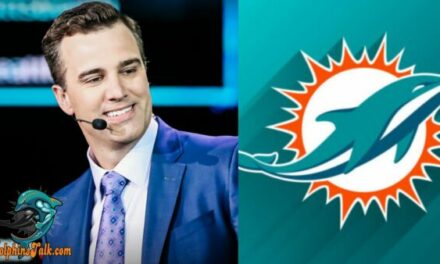
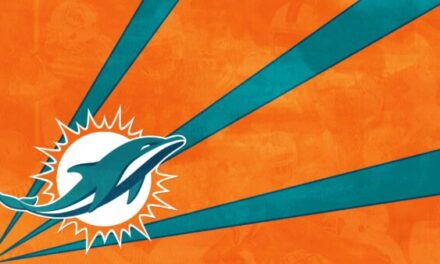
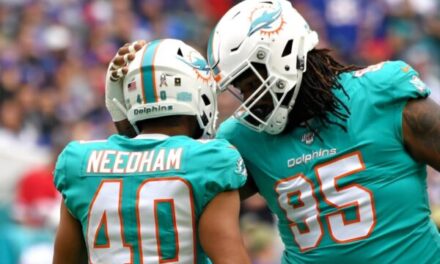
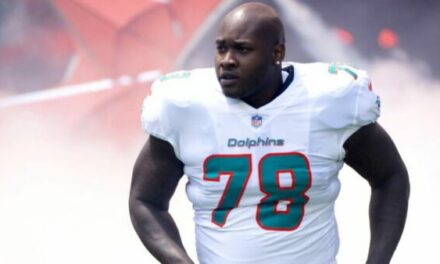





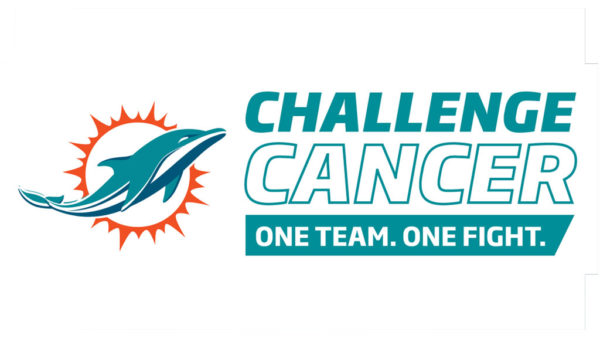



Just like the great article on the defense, this one on the offense follows in the same mode. Thank you for your input. I have learned so much. See you Thursday PM on NFL Draft Network.